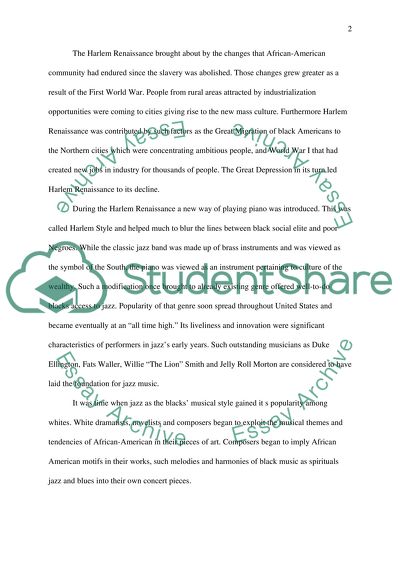Cite this document
(“Harlem Renaissance Essay Example | Topics and Well Written Essays - 1000 words”, n.d.)
Retrieved from https://studentshare.org/history/1420152-harlem-renaissance
Retrieved from https://studentshare.org/history/1420152-harlem-renaissance
(Harlem Renaissance Essay Example | Topics and Well Written Essays - 1000 Words)
https://studentshare.org/history/1420152-harlem-renaissance.
https://studentshare.org/history/1420152-harlem-renaissance.
“Harlem Renaissance Essay Example | Topics and Well Written Essays - 1000 Words”, n.d. https://studentshare.org/history/1420152-harlem-renaissance.


